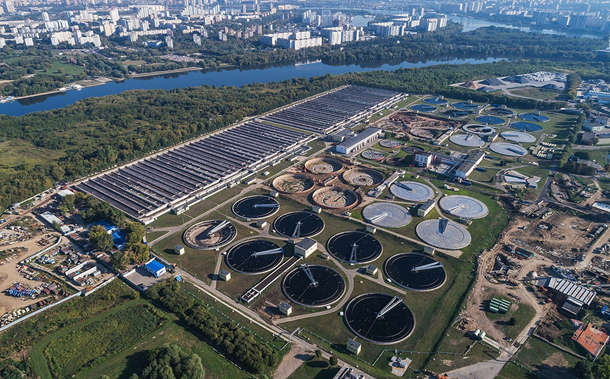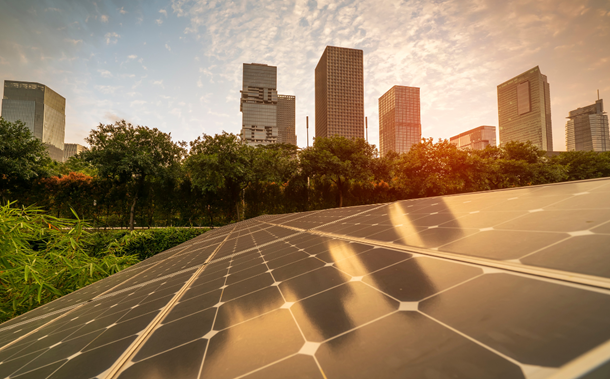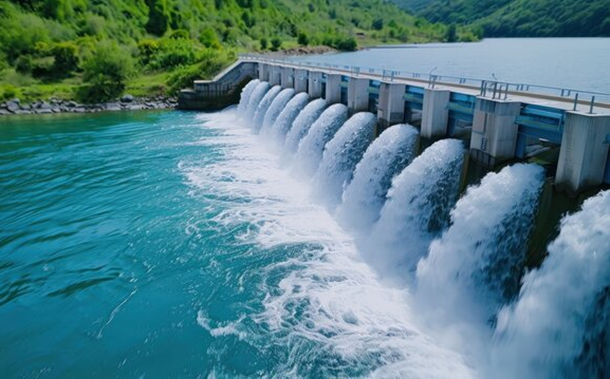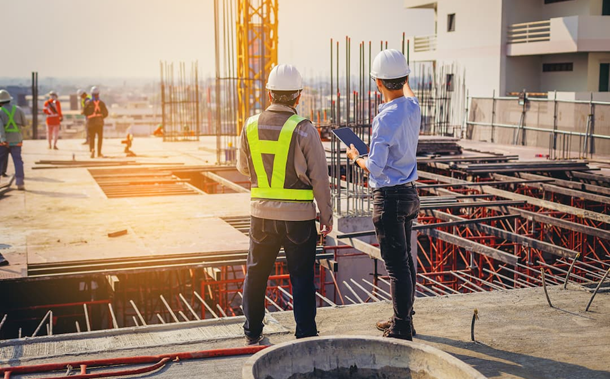The Effects of Rhythm on Building Openings and Fenestrations on Airflow Pattern in Tropical Low-Rise Residential Buildings
Downloads
Doi:10.28991/CEJ-2023-09-08-016
Full Text:PDF
Downloads
[2] Boisvert, D. R., & Toppinen, T. (2011). Charles Leslie Stevenson. Stanford Encyclopedia of Philosophy. Available online: https://plato.stanford.edu/archives/sum2011/entries/stevenson/ (accessed on June 2023).
[3] Chan, C. S. (1990). Cognitive processes in architectural design problem solving. Design Studies, 11(2), 60–80. doi:10.1016/0142-694X(90)90021-4.
[4] Thapa, R. (2018). Rhythm in Architecture: an Aesthetic Appeal. Journal of the Institute of Engineering, 13(1), 206–214. doi:10.3126/jie.v13i1.20368.
[5] Spence, C. (2020). Senses of place: architectural design for the multisensory mind. Cognitive Research: Principles and Implications, 5(1). doi:10.1186/s41235-020-00243-4.
[6] Mba, E. J., Okeke, F. O., & Okoye, U. (2021). Effects of wall openings on effective natural ventilation for thermal comfort in classrooms of primary schools in Enugu Metropolis, Nigeria. JP Journal of Heat and Mass Transfer, 22(2), 269–304. doi:10.17654/HM022020269.
[7] Nwalusi, D. M., Obi, N. I., Chendo, I. G., & Okeke, F. O. (2022). Climate Responsive Design Strategies for Contemporary Lowrise Residential Buildings in Tropical Environment of Enugu, Nigeria. IOP Conference Series: Earth and Environmental Science, 1054(1), 12052. doi:10.1088/1755-1315/1054/1/012052.
[8] Srivanit, M., & Jareemit, D. (2020). Modeling the influences of layouts of residential townhouses and tree-planting patterns on outdoor thermal comfort in Bangkok suburb. Journal of Building Engineering, 30, 101262. doi:10.1016/j.jobe.2020.101262.
[9] Ajay, G. (2021). Effective Fenestration through improved designs & Systems. WFM Media, New Delhi, India. Available online: https://wfmmedia.com/effective-fenestration-through-improved-designs-systems/ (accessed on April 2023).
[10] Okpalike, C., Okeke, F. O., Ezema, E. C., Oforji, P. I., & Igwe, A. E. (2022). Effects of Renovation on Ventilation and Energy Saving in Residential Building. Civil Engineering Journal, 7, 124–134. doi:10.28991/cej-sp2021-07-09.
[11] Bhole, V. (2021). Window and façade magazine - Middle East magazine. 1(6), WFM Media, New Delhi, India. Available online: https://wfmmedia.com/latest_publications/window-facade-magazine-middle-east/ (accessed on April 2023).
[12] Ayoosu, M. I., Lim, Y. W., Leng, P. C., & Idowu, O. M. (2021). Daylighting evaluation and optimisation of window to wall ratio for lecture theatre in the tropical climate. Journal of Daylighting, 8(1), 20–35. doi:10.15627/jd.2021.2.
[13] Okeke, F. O., Chendo, I. G., & Ibem, E. O. (2021). Imprints of security challenges on vernacular architecture of northern Nigeria: A study on Borno State. IOP Conference Series: Earth and Environmental Science, 665(1), 12021. doi:10.1088/1755-1315/665/1/012021.
[14] Heiselberg, P., Bjí¸rn, E., & Nielsen, P. V. (2002). Impact of Open Windows on Room Air Flow and Thermal Comfort. International Journal of Ventilation, 1(2), 91–100. doi:10.1080/14733315.2002.11683625.
[15] Li, Y., Haghighat, F., Andersen, K. T., Brohus, H., Heiselberg, P. K., Dascalaki, E., Fracastoro, G. V., & Perino, M. (1999). Analysis Methods for Natural and Hybrid Ventilation: an IEA ECB Annex 35 Literature Review. Department of Mechanical Engineering, Aalborg University, Aalborg, Denmark.
[16] Ramponi, R., & Blocken, B. (2012). CFD simulation of cross-ventilation flow for different isolated building configurations: Validation with wind tunnel measurements and analysis of physical and numerical diffusion effects. Journal of Wind Engineering and Industrial Aerodynamics, 104–106, 408–418. doi:10.1016/j.jweia.2012.02.005.
[17] Heiselberg, P., & Perino, M. (2010). Short-term airing by natural ventilation - implication on IAQ and thermal comfort. Indoor Air, 20(2), 126–140. doi:10.1111/j.1600-0668.2009.00630.x.
[18] Chang, W. R. (2006). Effect of porous hedge on cross ventilation of a residential building. Building and Environment, 41(5), 549–556. doi:10.1016/j.buildenv.2005.02.032.
[19] Chen, Q. (2009). Ventilation performance prediction for buildings: A method overview and recent applications. Building and Environment, 44(4), 848–858. doi:10.1016/j.buildenv.2008.05.025.
[20] Van Hooff, T., & Blocken, B. (2010). On the effect of wind direction and urban surroundings on natural ventilation of a large semi-enclosed stadium. Computers & Fluids, 39(7), 1146–1155. doi:10.1016/j.compfluid.2010.02.004.
[21] Ramponi, R., & Blocken, B. (2012). CFD simulation of cross-ventilation for a generic isolated building: Impact of computational parameters. Building and Environment, 53, 34–48. doi:10.1016/j.buildenv.2012.01.004.
[22] Tan, G., & Glicksman, L. R. (2005). Application of integrating multi-zone model with CFD simulation to natural ventilation prediction. Energy and Buildings, 37(10), 1049–1057. doi:10.1016/j.enbuild.2004.12.009.
[23] Larsen, T. S., & Heiselberg, P. (2008). Single-sided natural ventilation driven by wind pressure and temperature difference. Energy and Buildings, 40(6), 1031–1040. doi:10.1016/j.enbuild.2006.07.012.
[24] Reichrath, S., & Davies, T. W. (2002). Using CFD to model the internal climate of greenhouses: Past, present and future. Agronomie, 22(1), 3–19. doi:10.1051/agro:2001006.
[25] Karava, P., Stathopoulos, T., & Athienitis, A. K. (2004). Wind Driven Flow through Openings – A Review of Discharge Coefficients. International Journal of Ventilation, 3(3), 255–266. doi:10.1080/14733315.2004.11683920.
[26] Karava, P., Stathopoulos, T., & Athienitis, A. K. (2006). Impact of internal pressure coefficients on wind-driven ventilation analysis. International Journal of Ventilation, 5(1), 53–66. doi:10.1080/14733315.2006.11683724.
[27] Etheridge, D. W., & Nolan, J. A. (1979). Ventilation measurements at model scale in a turbulent flow. Building and Environment, 14(1), 53–64. doi:10.1016/0360-1323(79)90029-5.
[28] Linden, P. F. (1999). The fluid mechanics of natural ventilation. Annual Review of Fluid Mechanics, 31(1), 201–238. doi:10.1146/annurev.fluid.31.1.201.
[29] Hunt, G. R., & Linden, P. F. (1999). The fluid mechanics of natural ventilation - Displacement ventilation by buoyancy-driven flows assisted by wind. Building and Environment, 34(6), 707–720. doi:10.1016/S0360-1323(98)00053-5.
[30] Jamaludin, N., Khamidi, M. F., Abdul Wahab, S. N., & Klufallah, M. M. A. (2014). Indoor Thermal Environment in Tropical Climate Residential Building. E3S Web of Conferences, 3, 01026. doi:10.1051/e3sconf/20140301026.
[31] Melbourne, W. H. (1980). Turbulence Effects on Maximum Surface Pressures - A Mechanism and Possibility of Reduction. Wind Engineering, 541–551, Pergamon, Oxford, United Kingdom. doi:10.1016/b978-1-4832-8367-8.50055-3.
[32] Guan, Y., Li, A., Zhang, Y., Jiang, C., & Wang, Q. (2016). Experimental and numerical investigation on the distribution characteristics of wind pressure coefficient of airflow around enclosed and open-window buildings. Building Simulation, 9(5), 551–568. doi:10.1007/s12273-016-0283-6.
[33] Wright, N. G., & Hargreaves, D. M. (2006). Unsteady CFD simulations for natural ventilation. International Journal of Ventilation, 5(1), 13–20. doi:10.1080/14733315.2006.11683720.
[34] Van Moeseke, G., Gratia, E., Reiter, S., & De Herde, A. (2005). Wind pressure distribution influence on natural ventilation for different incidences and environment densities. Energy and Buildings, 37(8), 878–889. doi:10.1016/j.enbuild.2004.11.009.
[35] Zhang, A., Gao, C., & Zhang, L. (2005). Numerical simulation of the wind field around different building arrangements. Journal of Wind Engineering and Industrial Aerodynamics, 93(12), 891–904. doi:10.1016/j.jweia.2005.09.001.
[36] Martins, N. R., & da Graça, G. C. (2016). Validation of numerical simulation tools for wind-driven natural ventilation design. Building Simulation, 9(1), 75–87. doi:10.1007/s12273-015-0251-6.
[37] Larsen, T. S., Nikolopoulos, N., Nikolopoulos, A., Strotos, G., & Nikas, K. S. (2011). Characterization and prediction of the volume flow rate aerating a cross ventilated building by means of experimental techniques and numerical approaches. Energy and Buildings, 43(6), 1371–1381. doi:10.1016/j.enbuild.2011.01.015.
[38] van Ellen, L. A., Bridgens, B. N., Burford, N., & Heidrich, O. (2021). Rhythmic Buildings- a framework for sustainable adaptable architecture. Building and Environment, 203, 108068. doi:10.1016/j.buildenv.2021.108068.
[39] Okafor, M. U., Awuzie, B. O., Otasowie, K., Marcel-Okafor, U., & Aigbavboa, C. (2022). Evaluation of Indoor Thermal Comfort Conditions of Residential Traditional and Modern Buildings in a Warm-Humid Climate. Sustainability (Switzerland), 14(19), 12138. doi:10.3390/su141912138.
[40] Mba, E. J., Sam-amobi, C. G., & Okeke, F. O. (2022). An Assessment of Orientation on Effective Natural Ventilation for Thermal Comfort in Primary School Classrooms in Enugu City, Nigeria. European Journal of Sustainable Development, 11(2), 114. doi:10.14207/ejsd.2022.v11n2p114.
[41] Gossauer, E., Leonhart, R., & Wagner, A. (2006). User satisfaction at work--A study in sixteen office buildings. GI Health Engineer, 127(5), 232-240.
[42] Groat, L. N., & Wang, D. (2013). Architectural research methods. John Wiley & Sons, Hoboken, united States.
[43] Development Plan. (2018). Idemili north local government area, accessed from town planning authority office, Anambra State, Nigeria.
[44] Fairley, R. E. (1976). Dynamic Testing of Simulation Software. In Proc. Summer Computer Simulation Conference. Society for Modeling and Simulation International, Washington, United States.
[45] Nicol, F., & Roaf, S. (2005). Post-occupancy evaluation and field studies of thermal comfort. Building Research & Information, 33(4), 338–346. doi:10.1080/09613210500161885.
[46] Lin, B. S., Yu, C. C., Su, A. T., & Lin, Y. J. (2013). Impact of climatic conditions on the thermal effectiveness of an extensive green roof. Building and Environment, 67, 26–33. doi:10.1016/j.buildenv.2013.04.026.
[47] Karava, P., Stathopoulos, T., & Athienitis, A. K. (2011). Airflow assessment in cross-ventilated buildings with operable façade elements. Building and Environment, 46(1), 266–279. doi:10.1016/j.buildenv.2010.07.022.
[48] Conceiçí£o, E., Gomes, J., & Awbi, H. (2019). Influence of the airflow in a solar passive building on the indoor air quality and thermal comfort levels. Atmosphere, 10(12), 766. doi:10.3390/ATMOS10120766.
[49] Meakhail, T. (2013). Analysis of Airflow in Multi-room Building for Different Ventilation Patterns. International Journal of Mechanical and Mechatronics Engineering, 13(4), 1-11.
[50] Fanger, P. O. (1972). Thermal comfort: Analysis and applications in environmental engineering. (1972). Applied Ergonomics, 3(3), 181. doi:10.1016/s0003-6870(72)80074-7.
[51] ANSI/ASHRA Standard 55 – 2004. (2004). Thermal environmental conditions for human occupancy. American Society of Heating Refrigerating and Air Conditioning Engineers (ASHRAE), Atlanta, United States.
[52] Wang, L. L., Dols, W. S., & Emmerich, S. J. (2012). Simultaneous solutions of coupled thermal airflow problem for natural ventilation in buildings. HVAC and R Research, 18(1–2), 264–274. doi:10.1080/10789669.2011.591258.
[53] Ayata, T., & Yildiz, O. (2006). Investigating the potential use of natural ventilation in new building designs in Turkey. Energy and Buildings, 38(8), 959–963. doi:10.1016/j.enbuild.2005.10.007.
[54] Ahmad, T., Aibinu, A. A., & Stephan, A. (2019). Managing green building development – A review of current state of research and future directions. Building and Environment, 155, 83–104. doi:10.1016/j.buildenv.2019.03.034.
[55] Illankoon, I. M. C. S., Tam, V. W. Y., Le, K. N., & Shen, L. (2017). Key credit criteria among international green building rating tools. Journal of Cleaner Production, 164, 209–220. doi:10.1016/j.jclepro.2017.06.206.
[56] Gou, Z., & Xie, X. (2017). Evolving green building: triple bottom line or regenerative design? Journal of Cleaner Production, 153, 600–607. doi:10.1016/j.jclepro.2016.02.077.
[57] Lu, S., Fan, M., & Zhao, Y. (2018). A system to pre-evaluate the suitability of energy-saving technology for green buildings. Sustainability (Switzerland), 10(10), 3777. doi:10.3390/su10103777.
[58] Brentano, F. (2014). Psychology from an Empirical Standpoint. Routledge, Milton Park, United Kingdom. doi:10.4324/9781315747446.
[59] Hamzah, B., Gou, Z., Mulyadi, R., & Amin, S. (2018). Thermal comfort analyses of secondary school students in the tropics. Buildings, 8(4), 56. doi:10.3390/buildings8040056.
[60] Stavrakakis, G. M., Koukou, M. K., Vrachopoulos, M. G., & Markatos, N. C. (2008). Natural cross-ventilation in buildings: Building-scale experiments, numerical simulation and thermal comfort evaluation. Energy and Buildings, 40(9), 1666–1681. doi:10.1016/j.enbuild.2008.02.022.
[61] Schulze, T., & Eicker, U. (2013). Controlled natural ventilation for energy efficient buildings. Energy and Buildings, 56, 221–232. doi:10.1016/j.enbuild.2012.07.044.
[62] Mochida, A., Yoshino, H., Takeda, T., Kakegawa, T., & Miyauchi, S. (2005). Methods for controlling airflow in and around a building under cross-ventilation to improve indoor thermal comfort. Journal of Wind Engineering and Industrial Aerodynamics, 93(6), 437–449. doi:10.1016/j.jweia.2005.02.003.
[63] Raja, I. A., Nicol, J. F., McCartney, K. J., & Humphreys, M. A. (2001). Thermal comfort: Use of controls in naturally ventilated buildings. Energy and Buildings, 33(3), 235–244. doi:10.1016/S0378-7788(00)00087-6.
[64] Nwalusi, D. M., & Okeke, F. O. (2021). Adoption of appropriate technology for building construction in the tropics; A case of Nigeria. IOP Conference Series: Earth and Environmental Science, 730(1), 12013. doi:10.1088/1755-1315/730/1/012013.
[65] Spiru, P., & Simona, P. L. (2017). A review on interactions between energy performance of the buildings, outdoor air pollution and the indoor air quality. Energy Procedia, 128, 179–186. doi:10.1016/j.egypro.2017.09.039.
[66] Vornanen-Winqvist, C., Salonen, H., Järvi, K., Andersson, M. A., Mikkola, R., Marik, T., Kredics, L., & Kurnitski, J. (2018). Effects of ventilation improvement on measured and perceived indoor air quality in a school building with a hybrid ventilation system. International Journal of Environmental Research and Public Health, 15(7), 1414. doi:10.3390/ijerph15071414.
[67] Asere, L., & Blumberga, A. (2018). Energy efficiency - Indoor air quality dilemma in public buildings. Energy Procedia, 147, 445–451. doi:10.1016/j.egypro.2018.07.115.
[68] Asif, A., Zeeshan, M., & Jahanzaib, M. (2018). Indoor temperature, relative humidity and CO2 levels assessment in academic buildings with different heating, ventilation and air-conditioning systems. Building and Environment, 133, 83–90. doi:10.1016/j.buildenv.2018.01.042.
[69] Kelly, F. J., & Fussell, J. C. (2019). Improving indoor air quality, health and performance within environments where people live, travel, learn and work. Atmospheric Environment, 200, 90–109. doi:10.1016/j.atmosenv.2018.11.058.
[70] Congedo, P. M., Baglivo, C., D'Agostino, D., & Zací , I. (2015). Cost-optimal design for nearly zero energy office buildings located in warm climates. Energy, 91, 967–982. doi:10.1016/j.energy.2015.08.078.
- Authors retain all copyrights. It is noticeable that authors will not be forced to sign any copyright transfer agreements.
- This work (including HTML and PDF Files) is licensed under a Creative Commons Attribution 4.0 International License.![]()














